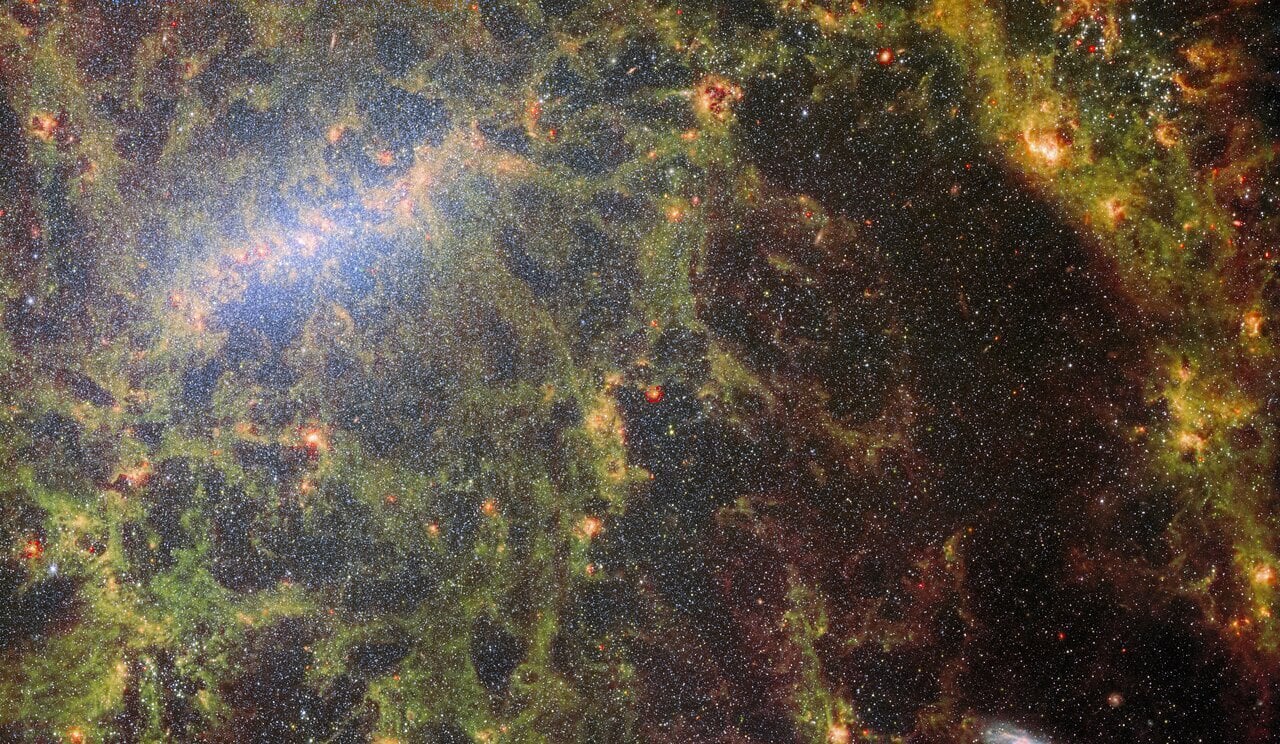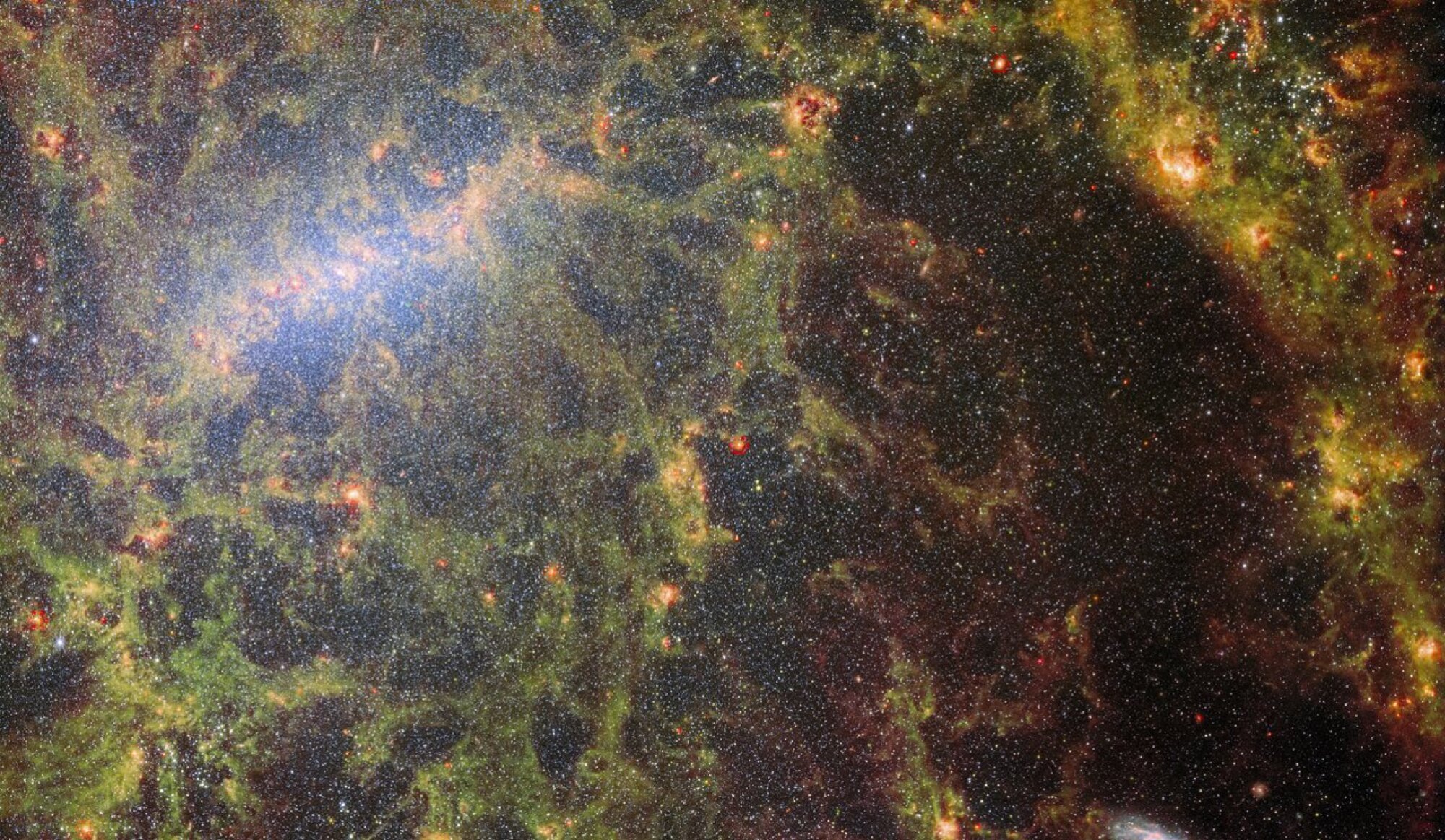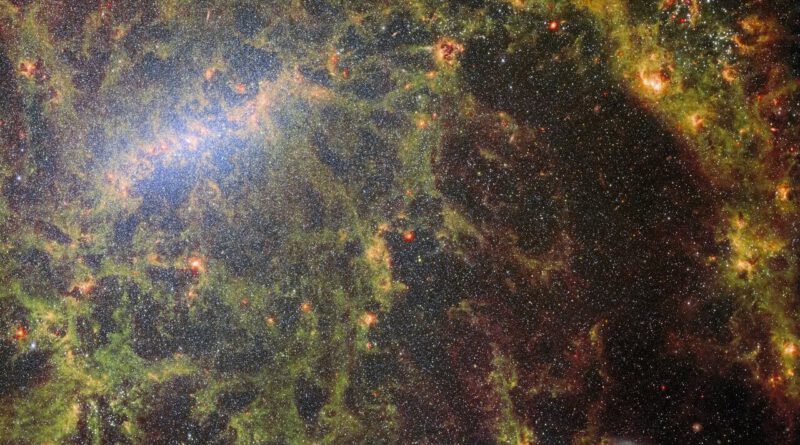Webb telescope just stared into the heart of a fascinating galaxy

The James Webb Space Telescope is so powerful that it can vividly see stars in a galaxy 17 million light-years away.
Astronomers pointed the most advanced space observatory ever built at the galaxy NGC 5068, peering deep into its starry core. The greater goal is to better grasp how stars, like our energy-providing sun, form and evolve in galaxies. Crucially, Webb views a type of light that’s invisible to the naked eye, called infrared light. These long infrared light waves pierce through thick clouds of cosmic dust and gas, allowing us unprecedented views into galactic hearts.
“With its ability to peer through the gas and dust enshrouding newborn stars, Webb is the perfect telescope to explore the processes governing star formation,” the European Space Agency, which collaborates on the telescope with NASA and the Canadian Space Agency, wrote. Solar systems born enveloped in cosmic dust simply can’t be seen with visible light telescopes like Hubble, the space agency said.
In the image below, Webb peered through “gargantuan clouds of dust.” Here’s what you’re seeing:
-
The radiant white bar is the galaxy’s core. Similar to the Milky Way, NGC 5068 is a barred spiral galaxy, meaning it has a long bar-shaped structure at its center, which is composed of densely-packed stars.
-
All those bright dots both in the core and populating the image are stars. Many thousands are visible. And though we can’t see them, many of those stars almost certainly harbor wild, exotic planets.
-
On the right is a curving, spiral arm of the galaxy. (In our galaxy, Earth inhabits the farther-reaches of a spiral arm.)
-
The general skeletal-like structure in the galaxy is made from colossal clumps and filaments of dust, the ESA explains.

The Webb telescope’s powerful abilities
The Webb telescope is designed to peer into the deepest cosmos and reveal unprecedented insights about the early universe. But it’s also peering at intriguing planets in our galaxy, and even the planets in our solar system.
Want more science and tech news delivered straight to your inbox? Sign up for Mashable’s Light Speed newsletter today.
Here’s how Webb is achieving unparalleled things, and likely will for decades:
-
Giant mirror: Webb’s mirror, which captures light, is over 21 feet across. That’s over two and a half times larger than the Hubble Space Telescope’s mirror. Capturing more light allows Webb to see more distant, ancient objects. As described above, the telescope is peering at stars and galaxies that formed over 13 billion years ago, just a few hundred million years after the Big Bang.
“We’re going to see the very first stars and galaxies that ever formed,” Jean Creighton, an astronomer and the director of the Manfred Olson Planetarium at the University of Wisconsin–Milwaukee, told Mashable in 2021.
-
Infrared view: Unlike Hubble, which largely views light that’s visible to us, Webb is primarily an infrared telescope, meaning it views light in the infrared spectrum. This allows us to see far more of the universe. Infrared has longer wavelengths than visible light, so the light waves more efficiently slip through cosmic clouds; the light doesn’t as often collide with and get scattered by these densely packed particles. Ultimately, Webb’s infrared eyesight can penetrate places Hubble can’t.
“It lifts the veil,” said Creighton.
-
Peering into distant exoplanets: The Webb telescope carries specialized equipment called spectrometers that will revolutionize our understanding of these far-off worlds. The instruments can decipher what molecules (such as water, carbon dioxide, and methane) exist in the atmospheres of distant exoplanets — be it gas giants or smaller rocky worlds. Webb will look at exoplanets in the Milky Way galaxy. Who knows what we’ll find.
“We might learn things we never thought about,” Mercedes López-Morales, an exoplanet researcher and astrophysicist at the Center for Astrophysics-Harvard & Smithsonian, told Mashable in 2021.
Already, astronomers have successfully found intriguing chemical reactions on a planet 700 light-years away, and the observatory has started looking at one of the most anticipated places in the cosmos: the rocky, Earth-sized planets of the TRAPPIST solar system.

